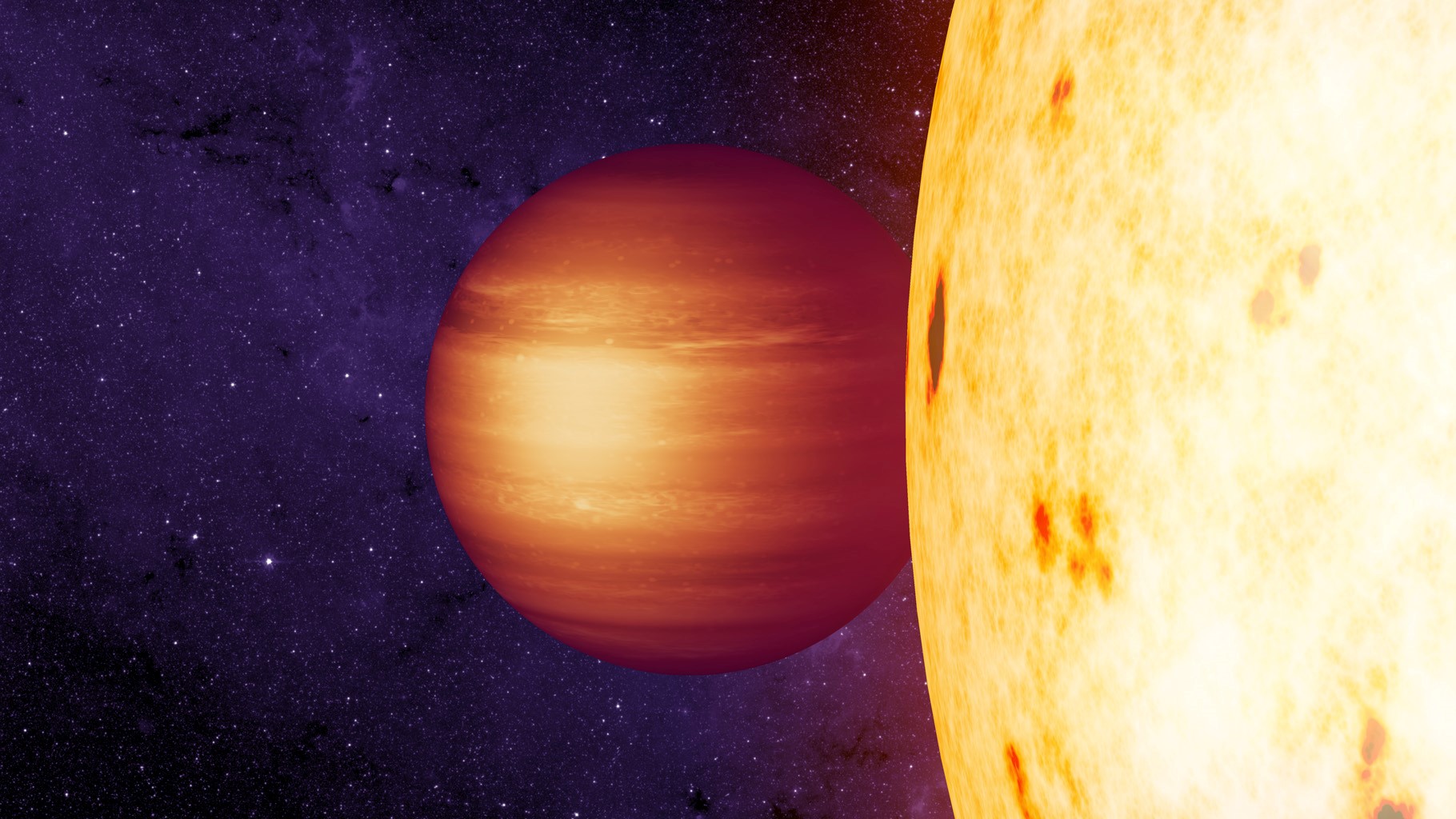Weird Winds Blow the 'Wrong Way' on Scorching Hot Exoplanet

If you're looking to beat the heat on exoplanet CoRoT-2b, astronomers found the hottest spot in a surprising location. Their discovery could help scientists better understand how winds blow on "hot Jupiters" or massive gas giants that orbit very close to their parent stars.
Planets like CoRoT-2b can take three days or less to finish an orbit. (By contrast, Mercury in our solar system makes a single orbit around the sun in 88 days.) So it's no surprise that these hot Jupiters are extremely hot, especially on their daytime side. One side always faces the star, making that area especially warm.
Other hot Jupiters have strong eastward winds at the equators, which sometimes means the winds displace the hottest area on the planet to just east of the planet's closest spot to the star. Not on CoRoT-2b, however. Its hotspot is to the west, according to new data from NASA's Spitzer Space Telescope. [The Strangest Alien Planets We Know]
The team studying it suggests CoRoT-2b's wind blows in the opposite direction to other hot Jupiters. Why? That remains a mystery.
"We've previously studied nine other hot Jupiter, giant planets orbiting super close to their star. In every case, they have had winds blowing to the east, as theory would predict," co-author Nicolas Cowan, an astronomer at McGill University in Montreal, said in a statement.
"On this planet, the wind blows the wrong way. Since it's often the exceptions that prove the rule, we are hoping that studying this planet will help us understand what makes hot Jupiters tick."
"Something unusual happening"
Astronomers already knew that weird things are happening at CoRoT-2b, which the French-led space observatory CoRoT (the name is short for Convection Rotation and planetary Transits) discovered in 2007. It's inflated and there are some emissions of light from its surface that astronomers can't explain. "Both of these factors suggest there is something unusual happening in the atmosphere of this hot Jupiter," said lead author Lisa Dang, a McGill doctoral student, in the same statement.
Get the Space.com Newsletter
Breaking space news, the latest updates on rocket launches, skywatching events and more!
The researchers suggest three ways that CoRoT-2b could have a hotspot in a different spot. First, maybe the planet rotates so slowly that it orbits faster than it spins around. If this were the case, winds could blow in the opposite direction ― west, instead of east. If this is the case, however, astronomers would need to refine their theories about how stars and planets interact when they are close together.
Other explanations include large clouds on the east side of the planet (which contradicts atmospheric circulation models), or maybe interference between the planet's atmosphere and its magnetic field.
"We'll need better data to shed light on the questions raised by our finding," Dang said. "Fortunately, the James Webb Space Telescope, scheduled to launch next year, should be capable of tackling this problem. Armed with a mirror that has 100 times the collecting power of Spitzer's, it should provide us with exquisite data like never before."
A study based on the research was published in Nature Astronomy on Monday (Jan. 22).
Follow us @Spacedotcom, Facebook and Google+. Original article on Space.com.
Join our Space Forums to keep talking space on the latest missions, night sky and more! And if you have a news tip, correction or comment, let us know at: community@space.com.

Elizabeth Howell (she/her), Ph.D., was a staff writer in the spaceflight channel between 2022 and 2024 specializing in Canadian space news. She was contributing writer for Space.com for 10 years from 2012 to 2024. Elizabeth's reporting includes multiple exclusives with the White House, leading world coverage about a lost-and-found space tomato on the International Space Station, witnessing five human spaceflight launches on two continents, flying parabolic, working inside a spacesuit, and participating in a simulated Mars mission. Her latest book, "Why Am I Taller?" (ECW Press, 2022) is co-written with astronaut Dave Williams.









